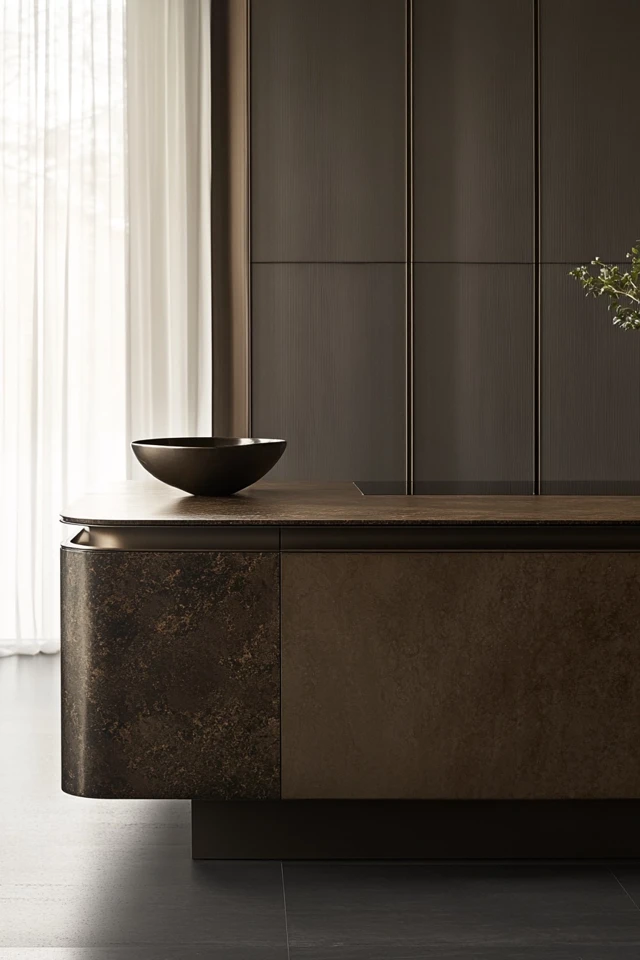The kitchen island is often the centerpiece of the modern kitchen—a space for cooking, dining, and gathering. Designing a minimalist kitchen island combines functionality with clean, understated beauty. It’s about creating a sleek, organized, and stylish focal point without unnecessary clutter or distractions.
When I redesigned my kitchen a few years ago, the island was my biggest challenge. I wanted it to serve as a multipurpose hub while maintaining the simplicity that defines minimalist design. After hours of deliberation, I found the perfect balance between practicality and aesthetics, and now it’s my favorite part of the house! Let me share what I’ve learned about designing a minimalist kitchen island that’s as stylish as it is functional.
Why a Minimalist Kitchen Island?
- Clean Aesthetic: A minimalist kitchen island brings a sense of calm and order to one of the busiest rooms in the house.
- Functionality: Minimalism emphasizes practical design, making the island more efficient and purposeful.
- Timeless Appeal: Simple, uncluttered designs never go out of style.
- Enhanced Space: A minimalist island creates an open, airy feel, making even smaller kitchens appear larger.
1. Start With a Neutral Color Palette
Why It Works:
Neutral colors, like white, gray, beige, or black, emphasize simplicity and ensure the island blends seamlessly with the rest of the kitchen.
How to Do It:
- Opt for a white quartz or concrete countertop for a sleek, modern finish.
- Pair the island with cabinetry in matte or gloss finishes in shades like gray or charcoal.
- Add subtle contrast with wood accents, like a natural wood base or stools.
Pro Tip: If you want a bolder look, consider a black island base with a white countertop for a high-contrast minimalist style.
2. Focus on Clean Lines
Why It Works:
Straight, unadorned edges create a polished and streamlined look that’s central to minimalism.
How to Do It:
- Avoid ornate details like decorative molding or beveled edges.
- Choose flat-panel cabinets or drawers for the island base.
- Use a waterfall edge countertop for a sleek, modern touch.
Pro Tip: Keep hardware minimal by opting for handleless cabinets or slim, linear pulls.
3. Choose a Multi-Functional Design
Why It Works:
Minimalism is about making the most of your space, and a multi-functional island can serve as a cooking station, dining area, and storage unit all in one.
How to Do It:
- Install a stovetop or sink directly into the island for added functionality.
- Add an overhang on one side to create a casual breakfast bar or workspace.
- Incorporate hidden storage, like deep drawers or cabinets, to keep the surface clutter-free.
Pro Tip: Consider a built-in wine rack or shelving for frequently used items like cookbooks or cutting boards.
4. Incorporate Minimalist Lighting
Why It Works:
Simple, modern lighting enhances the style of the island without overwhelming the design.
How to Do It:
- Hang pendant lights with clean shapes, like globes, cylinders, or linear designs, directly above the island.
- Choose materials like matte black, brass, or frosted glass for a minimalist finish.
- Opt for dimmable LED bulbs to adjust the lighting for cooking, dining, or entertaining.
Pro Tip: Stick to a maximum of two or three pendant lights to maintain a balanced and uncluttered look.
5. Add Subtle Texture
Why It Works:
Subtle textures add visual interest and warmth without breaking the minimalist vibe.
How to Do It:
- Choose a countertop material with a soft veining or matte finish, like quartz or marble.
- Use natural wood or rattan for bar stools to introduce organic texture.
- Add a textured backsplash or wall panel behind the island for a touch of dimension.
Pro Tip: Stick to a monochromatic palette when introducing texture to avoid visual clutter.
6. Keep the Surface Clutter-Free
Why It Works:
A clear, tidy surface is essential for a minimalist kitchen island.
How to Do It:
- Use built-in storage for small appliances and utensils.
- Keep decor to a minimum—choose one or two statement pieces, like a bowl of fruit or a ceramic vase.
- Store non-essential items in cabinets or on shelves away from the island.
Pro Tip: Adopt a “one-in, one-out” rule to keep the surface organized and uncluttered.
7. Use Open Shelving Thoughtfully
Why It Works:
Open shelving provides a practical yet stylish way to display curated items while maintaining a minimalist aesthetic.
How to Do It:
- Incorporate a single open shelf on one side of the island for easy-to-reach storage.
- Use the shelf to display neatly stacked dishes, glasses, or bowls in neutral tones.
- Add a few small decor items, like a potted plant or cookbook, for a personal touch.
Pro Tip: Avoid overcrowding the shelves to maintain a clean and intentional look.
8. Incorporate Hidden Features
Why It Works:
Hidden features enhance functionality without disrupting the sleek, minimalist design.
How to Do It:
- Install a pop-up power outlet for charging devices or plugging in small appliances.
- Add pull-out recycling and trash bins for easy waste management.
- Use soft-close drawers and cabinets for a smooth, seamless experience.
Pro Tip: Consider built-in organizers for utensils, spices, or cutting boards to maximize storage.
9. Blend Rustic and Minimalist Elements
Why It Works:
Rustic materials add warmth and character to the clean, modern lines of a minimalist island.
How to Do It:
- Pair a sleek white countertop with a reclaimed wood base for contrast.
- Add woven or wooden bar stools for a rustic touch.
- Incorporate natural stone or concrete in muted tones for an earthy vibe.
Pro Tip: Balance rustic accents with plenty of negative space to keep the minimalist aesthetic intact.
10. Invest in High-Quality Materials
Why It Works:
Minimalist design thrives on quality over quantity, and investing in durable, timeless materials ensures your kitchen island remains stylish and functional for years to come.
How to Do It:
- Choose countertops made of quartz, marble, or butcher block for a refined finish.
- Use durable, easy-to-clean materials for the island base, like laminate or wood veneer.
- Opt for stools and lighting fixtures that combine aesthetics with comfort and longevity.
Pro Tip: When budgeting, prioritize materials for surfaces that experience the most wear and tear, like the countertop.
Picture Gallery

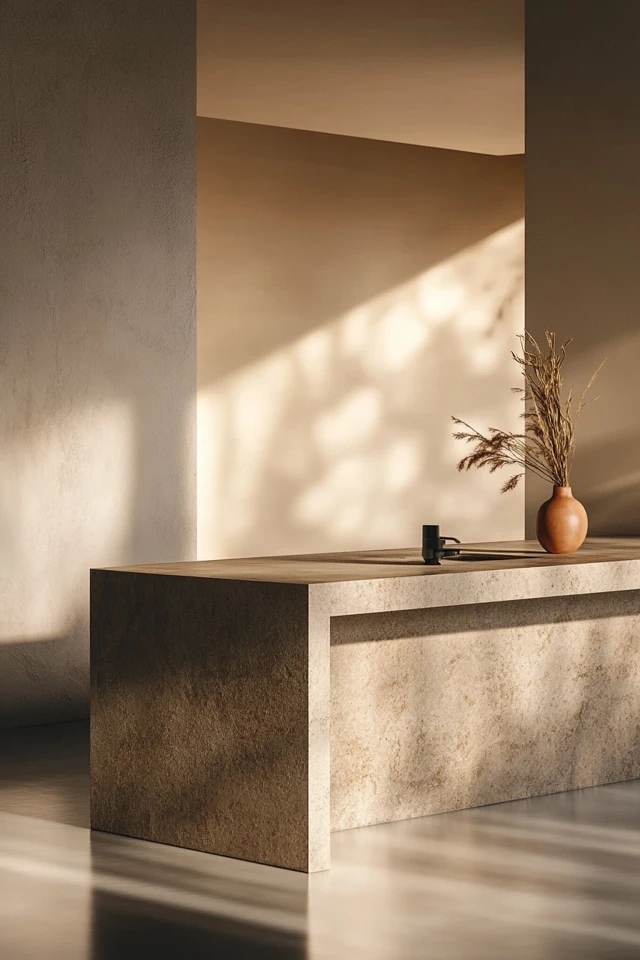
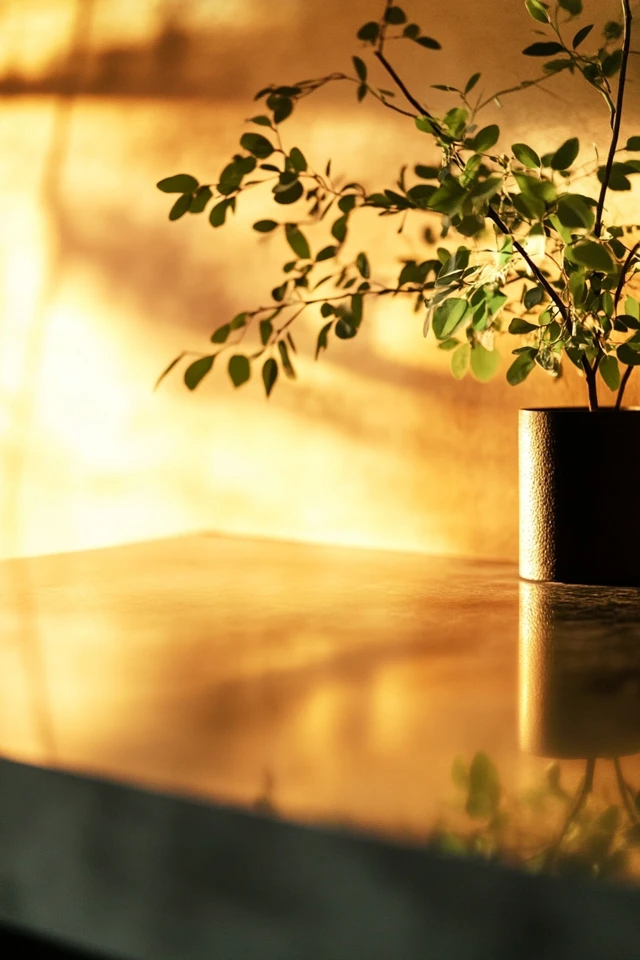

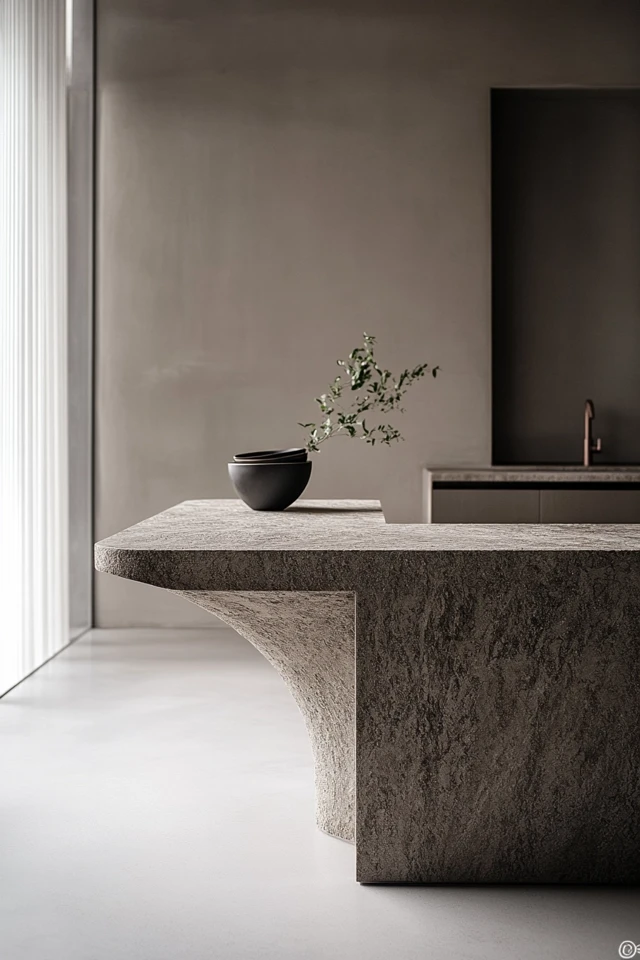
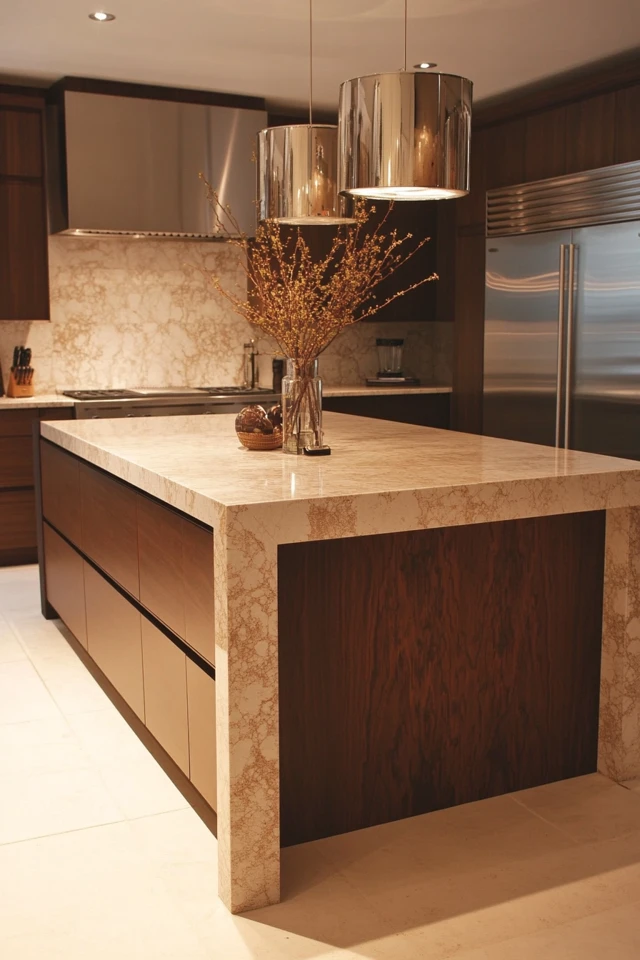
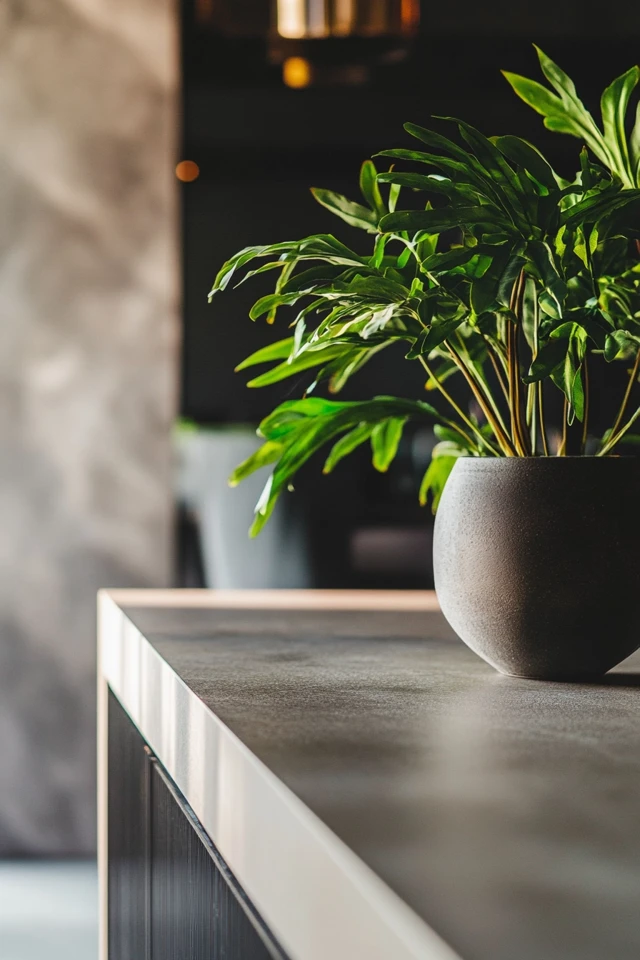
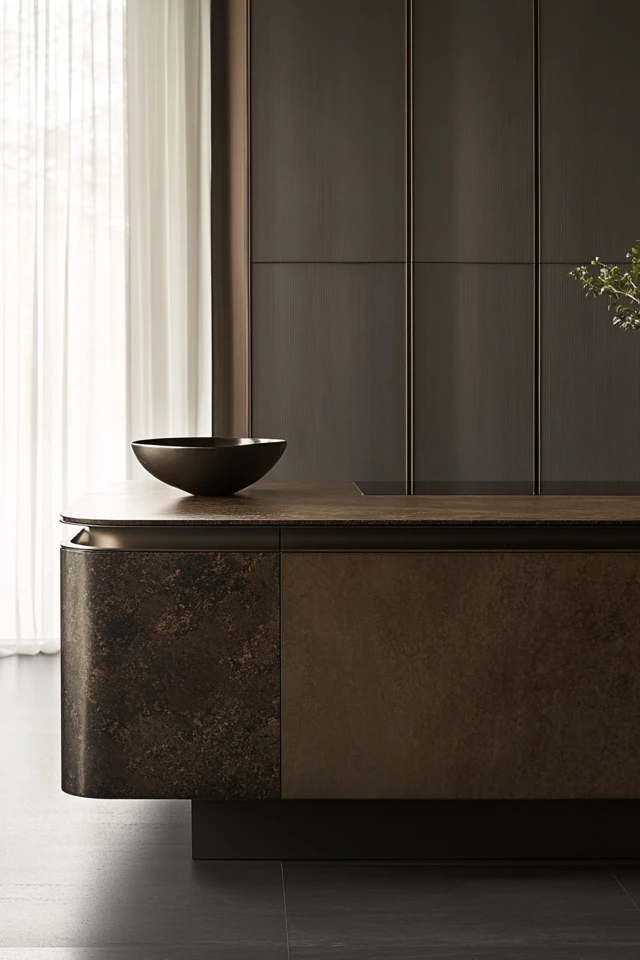
Conclusion
A minimalist kitchen island is the ultimate blend of form and function. By focusing on clean lines, neutral colors, and thoughtful design features, you can create an island that not only enhances your kitchen’s aesthetics but also serves as a practical and versatile hub.
Whether you’re working with a large open-plan kitchen or a smaller space, the key to minimalist style is intentionality. Every element of your kitchen island should serve a purpose while contributing to the overall harmony of the design. With these tips, you can create a sleek, stylish, and timeless centerpiece that transforms your kitchen into a minimalist masterpiece.
FAQs
1. What size should a minimalist kitchen island be?
The size depends on your kitchen layout, but a minimalist island should feel proportionate to the space. Leave at least 36 inches of clearance around the island for functionality.
2. Can I add seating to a minimalist kitchen island?
Yes! Add simple, streamlined bar stools in neutral tones or natural materials like wood or metal.
3. What materials work best for a minimalist kitchen island?
Quartz, marble, concrete, and natural wood are excellent choices for countertops and bases due to their clean, timeless appeal.
4. How do I keep my kitchen island clutter-free?
Incorporate hidden storage for appliances and utensils, and limit decor to one or two statement pieces.
5. Can a small kitchen have a minimalist island?
Absolutely! Opt for a compact island with built-in storage and multi-functional features like a dining overhang or built-in cutting board.

